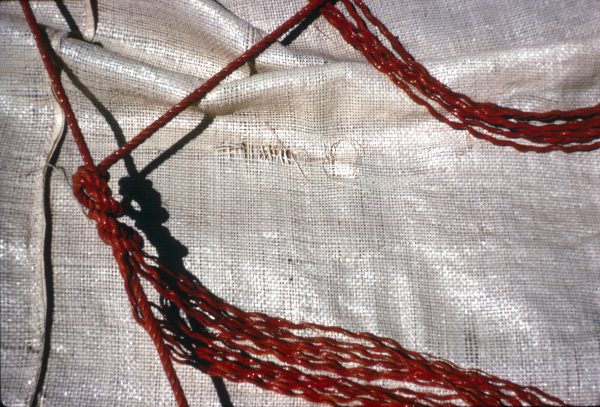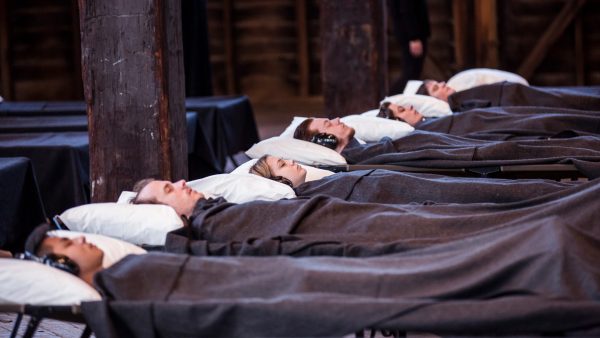LIVING ARCHIVES
The Living Archives project animates the Kaldor Public Art Projects archives with the memories of those who experienced our projects firsthand. These memories provide a rare glimpse into our history through the eyes of visitors, artists, teachers, art lovers and students.
Browse the Living Archives stories below.
There’s so much potential in art, and people are free to do anything now.
Seeing a building site mapped out like that—crossing garden beds as though they weren’t there—was like being shown something I should have been aware of all the time, shown a history I’d never learned.
It some ways it looked very simple, in other ways it looked very complex… The play of shadows and light across it was amazing. It really had a living presence about it.
I visited Asad Raza’s installation on a quiet Monday morning, and there was an incredible sense of peace when walking into the space, as the soil seemed to absorb all the ambient sound from outside.
It had a wider impact than just doing an essay for uni. It was more about how can we share that—the thing that sparked the joy and the interest in art for us in the first place?
Anyone could have their name in lights—a way to feel like you are part of something, even for a fleeting moment, without having to totally put yourself out there.
As country kids we took up every opportunity to see sophisticated Sydney. We were in awe of the teamwork and the originality of the idea.
We really used it as an art expression from within the trade, showing what we were capable of.
I was seven and I remember walking over the material and seeing the bright coloured rope everywhere.
[Gregor Schneider] thought he could plonk this thing on Bondi anywhere. He didn’t realise sometimes Bondi gets these massive waves. The other thing was with the beach runners, they were very difficult to deal with.
All of the questions were about transformation. The work was about transformation. The work wouldn’t be a work without the public.
“When are they going to make a mistake? When is one of them going to fall over?“ But they never did that. The work was not about failure, the work was about success.
I said at the time, ”I went to mock and stayed to pray.” I had not expected it to be so powerful.
As the wind lifted under the plastic, it gave the extraordinary impression that the sea was running up the cliffs—like an upward waterfall.
As an art student it was an amazing thing to work on. It was a scale that we’d never seen before, with an artist that within the Australian context we’d have no contact with.
My memory of the hug will last longer than the photo I might have taken, which would have become buried somewhere on my computer.
There were things that happened before you and things that are going to happen afterwards. You’re part of a continuity, and I think that’s a liberating perspective to have.
“Put your computers away, put your pens down and do something. Move. Use your body. Come up with something. See what happens.“
As a child I was fascinated with the way they looked, covered with bronze metallic colour, as they moved and sang to their hearts’ content. It was mesmerising.
This was an in-between space—last week they were closed-up brick kilns, and in a few more weeks they will again be closed-up brick kilns.
John’s passion was contemporary art and I think that he wanted to break a few of the barriers to get people more involved… He was pushing boundaries, as he did with his fabrics.
Being part of ‘Swap’ was nice in that I was included in this world that isn’t traditionally for children. I got an experience there that not many people had given me.
I’d never designed a dog before, so you just get a fresh sheet of paper, and that’s how it started.
It was phenomenal—he was the father of conceptual art, and there he was sitting in a cafe, talking with us.
The scale of a terrier dog, which reminded me of Toto from The Wizard of Oz, made from flowers was surreal and wonderful.
I still remember the moment Marina came and sat opposite me. Her presence was so strong, but soft, and her look was so powerful that I couldn’t help but look in amazement at the honesty she was showing me in her expression.
We started to talk about things like life and death, and heaven and hell. She really blew me away with the questions, and she was seven at the time… It opened up a different world.
They would eat out every night, as an opportunity to get together with clients or visiting people in New York. It was always work, every waking moment.






























